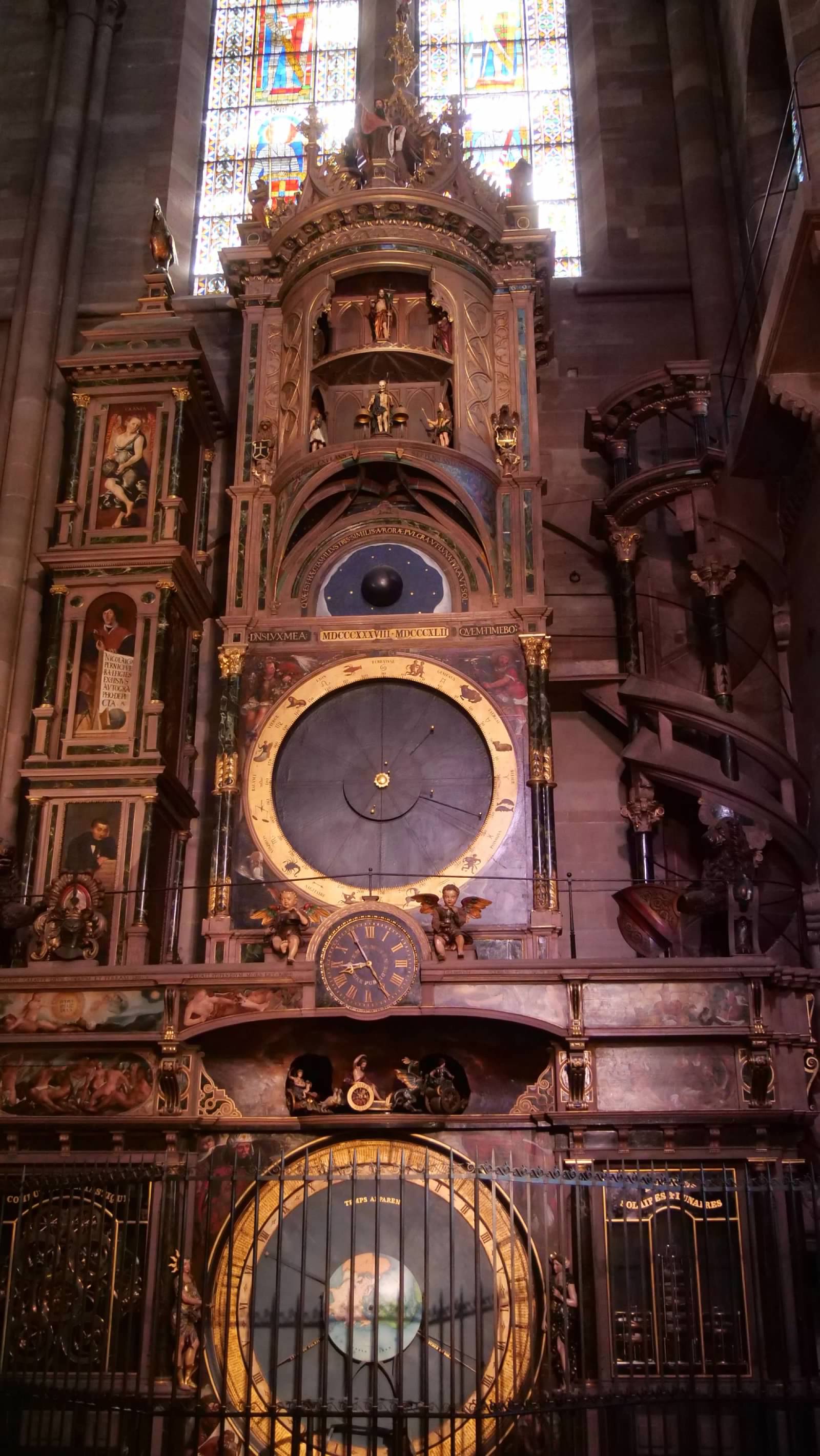After our second night in Metz, we caught a train back to Strasbourg, where we again left our luggage at our hotel and ventured out into the city. This time we had a little familiarity with the city, from our tour several days earlier. As departed our hotel, it began to rain, but we didn't let that deter us. We purchased tickets for the boat tour on the Ile River, and by the time the tour got underway, the rain had stopped. The boat tour took us through the locks in the Petite France section of the city, giving us a close up view of the Barrage Vauban and defenses at that end of the city, before turning around and going downstream to the European Parliament building.
 After the boat tour, we visited the Cathedral. which began construction in the 11th century, and once completed was the tallest building in the world until 1874, and remains the tallest structure entirely built in the middle ages that survives intact today. it also contains an impressive astronomical clock that is a remarkable work of both engineering and art.
After the boat tour, we visited the Cathedral. which began construction in the 11th century, and once completed was the tallest building in the world until 1874, and remains the tallest structure entirely built in the middle ages that survives intact today. it also contains an impressive astronomical clock that is a remarkable work of both engineering and art.
We walked extensively through the city, visiting other churches, including the Church of St. Thomas, a protestant church where Mozart played the organ when he visited the city. We also visited the Historical Museum of Strasbourg, where we learned a great deal about this historic city. This is the city where Gutenberg perfected his printing press, and for a long time the city was a center of printing and publishing. This year, Strasbourg has been named the UNESCO World Book Capital City in recognition of that history. There is an active community of BookCrossing members in Strasbourg, and they are marking this designation with a number of events. Their monthly meeting was scheduled for the evening we were in the city, and they graciously invited us to join them for drinks and conversation.
 By the afternoon of our second day here, we had thoroughly explored the heart of the city, which was just as well, because we had to catch a train to Frankfurt, Germany, where we would spend the night before flying home. Our hotel near the train station felt like the world's smallest, but it was clean and the bed was comfortable, and we only needed a place to sleep. In the morning, we caught a S-bahn train to the airport and checked in for our flights home. We enjoyed a nice Irish lunch in Dublin during our layover, and our flights home were uneventful. We even arrived back at Dulles Airport a little bit ahead of our scheduled arrival.
By the afternoon of our second day here, we had thoroughly explored the heart of the city, which was just as well, because we had to catch a train to Frankfurt, Germany, where we would spend the night before flying home. Our hotel near the train station felt like the world's smallest, but it was clean and the bed was comfortable, and we only needed a place to sleep. In the morning, we caught a S-bahn train to the airport and checked in for our flights home. We enjoyed a nice Irish lunch in Dublin during our layover, and our flights home were uneventful. We even arrived back at Dulles Airport a little bit ahead of our scheduled arrival.
We walked extensively through the city, visiting other churches, including the Church of St. Thomas, a protestant church where Mozart played the organ when he visited the city. We also visited the Historical Museum of Strasbourg, where we learned a great deal about this historic city. This is the city where Gutenberg perfected his printing press, and for a long time the city was a center of printing and publishing. This year, Strasbourg has been named the UNESCO World Book Capital City in recognition of that history. There is an active community of BookCrossing members in Strasbourg, and they are marking this designation with a number of events. Their monthly meeting was scheduled for the evening we were in the city, and they graciously invited us to join them for drinks and conversation.